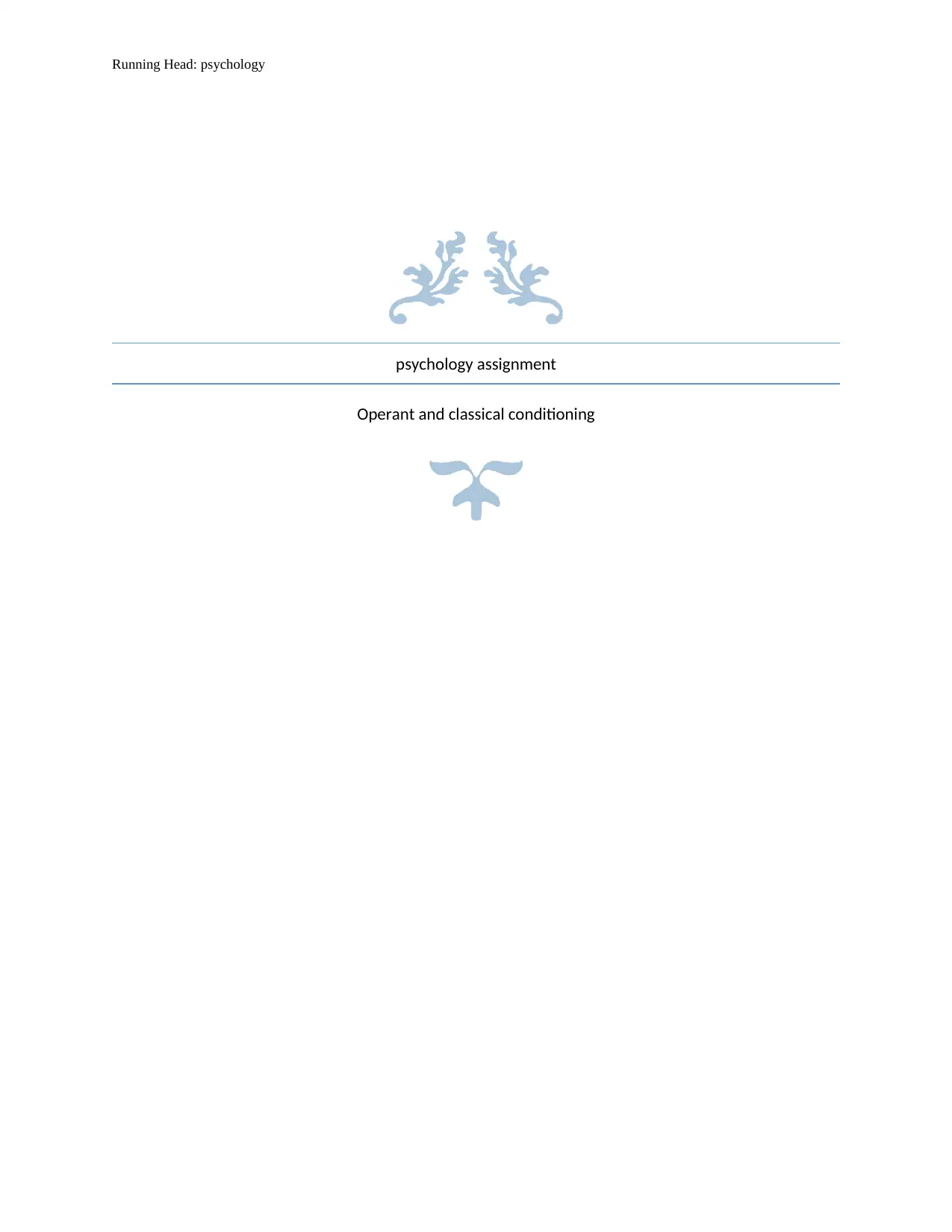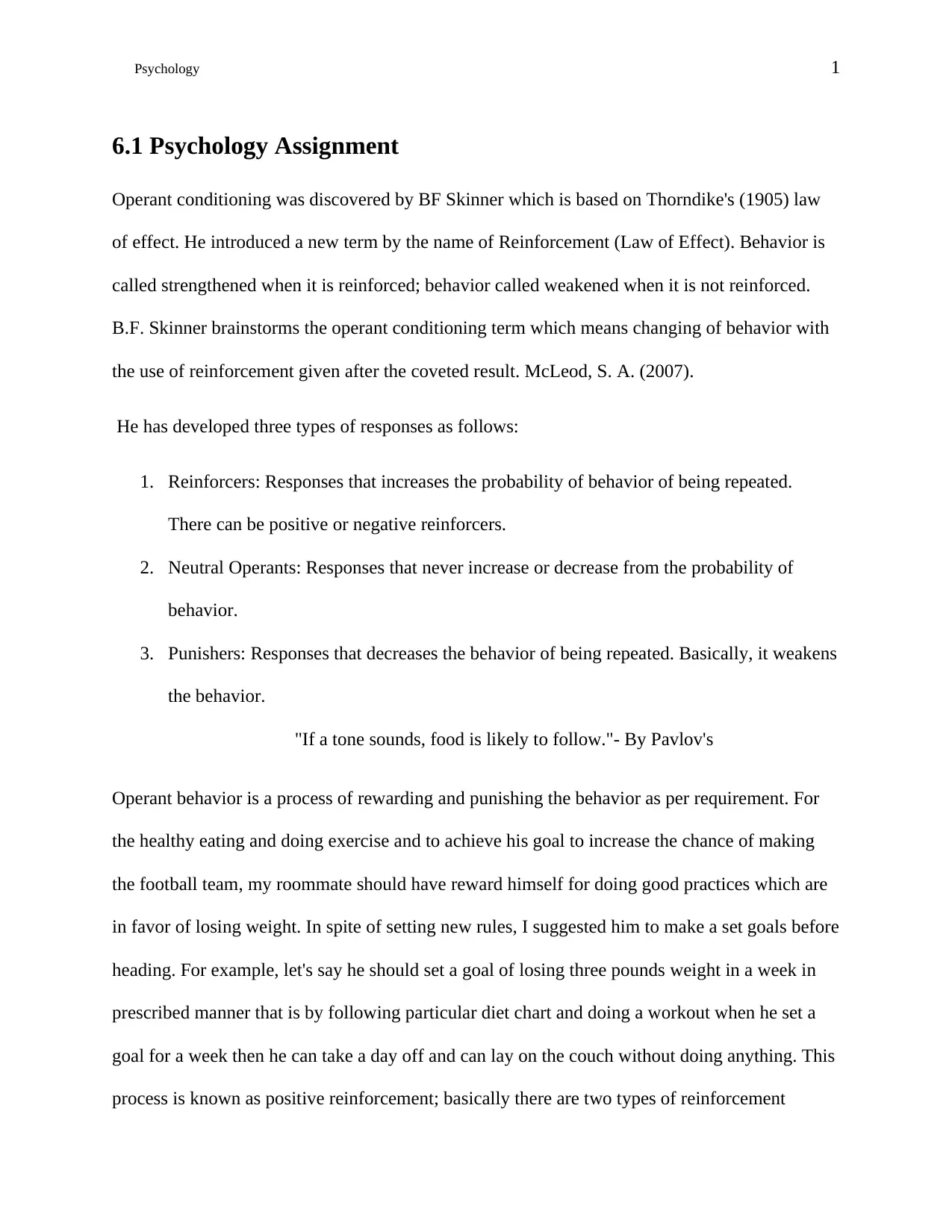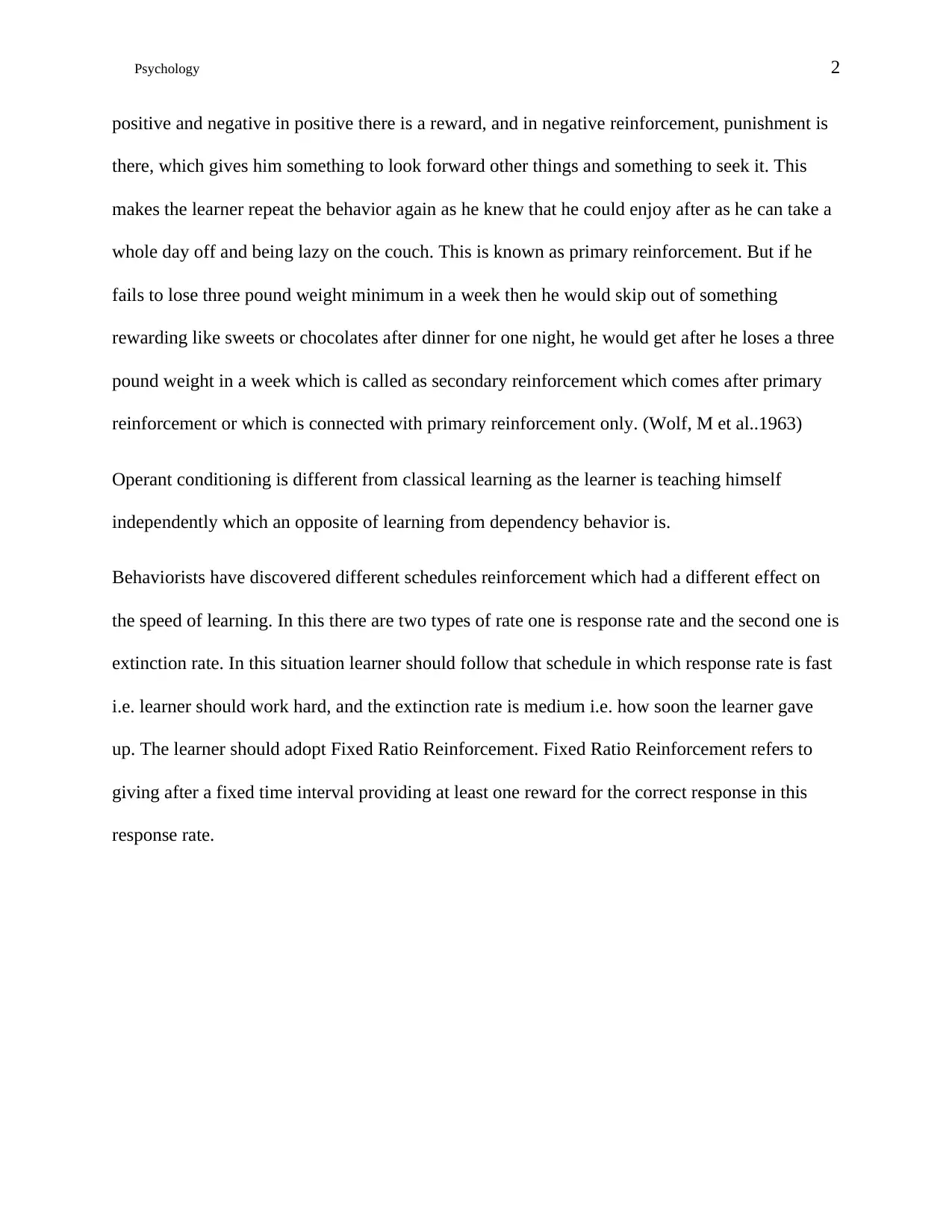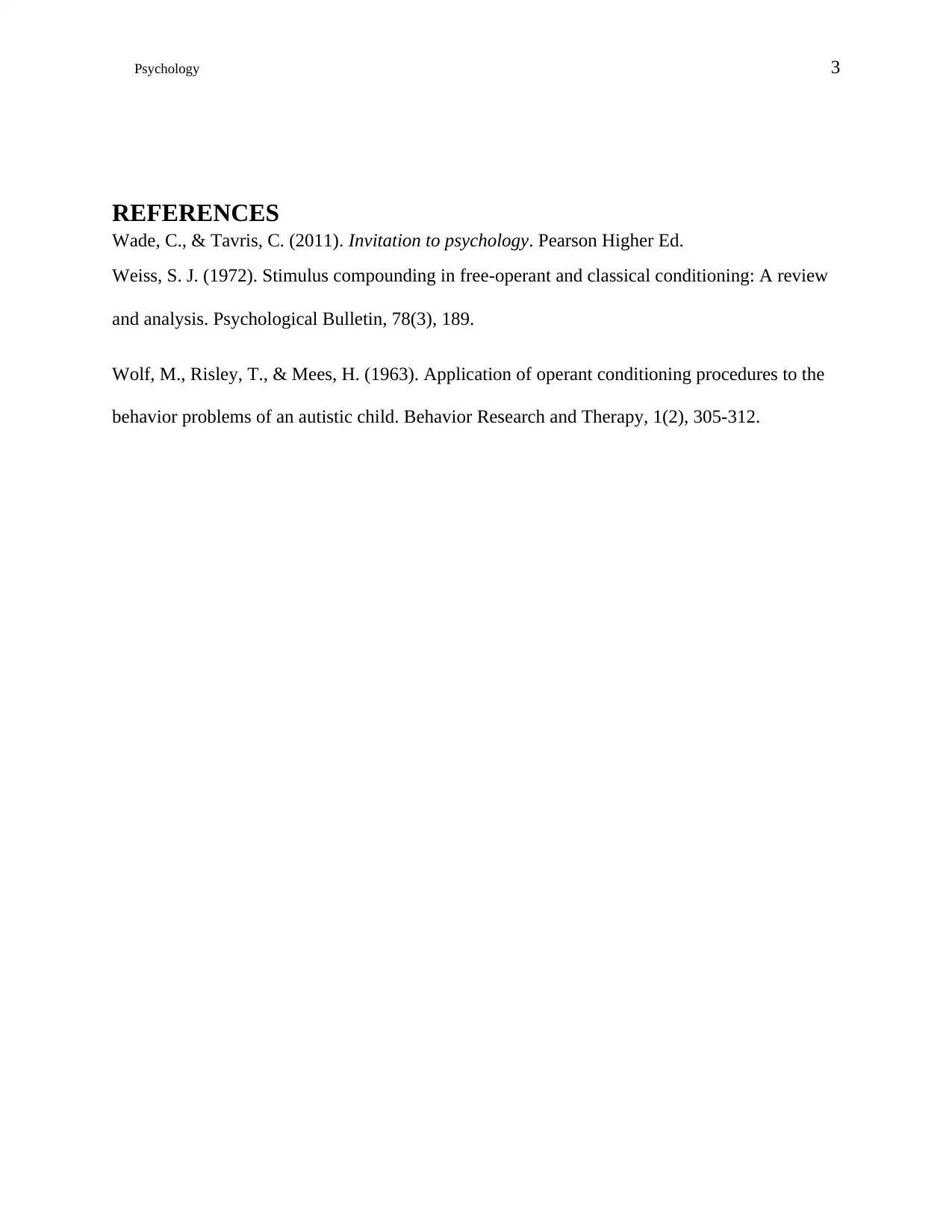Psychology Assignment: Behaviorism, Conditioning, and Reinforcement
VerifiedAdded on 2019/09/25
|4
|695
|348
Homework Assignment
AI Summary
This psychology assignment delves into the concepts of operant and classical conditioning. It explains the principles of reinforcement, including positive and negative reinforcement, and how they influence behavior. The assignment discusses how operant conditioning, as described by B.F. Skinner, involves changing behavior through rewards and punishments. It provides a practical example of applying operant conditioning to a roommate's goal of losing weight, detailing the use of both primary and secondary reinforcers. The assignment also contrasts operant conditioning with classical learning and discusses different reinforcement schedules, emphasizing the importance of a high response rate and a moderate extinction rate, and suggesting the use of Fixed Ratio Reinforcement for optimal learning outcomes. The paper references relevant psychological studies and texts to support its arguments and explanations.
1 out of 4











![[object Object]](/_next/static/media/star-bottom.7253800d.svg)